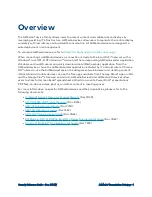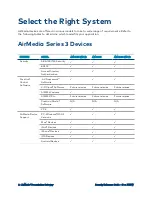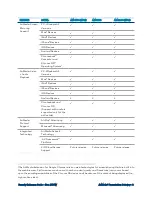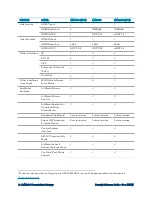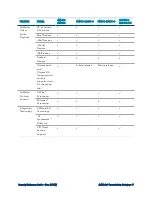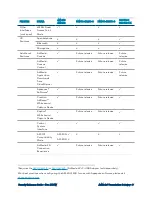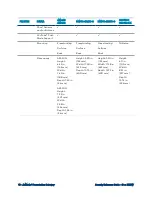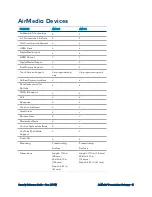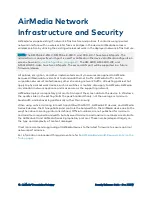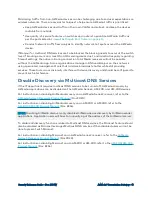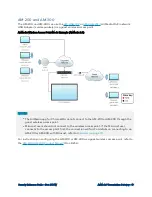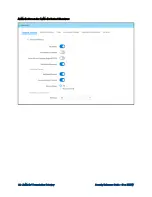
14 • AirMedia® Presentation Gateway
Security Reference Guide — Doc. 7693W
To ensure proper bandwidth provisioning, low latency, and consistent performance, consider the
following:
NOTES:
The following techniques do not make up a complete list of possible issues. The
techniques are included to give guidance in minimizing disruption of the AirMedia experience
for end users and administrators.
l
Manage wireless network infrastructure correctly.
l
Design the network architecture between the AirMedia sender and receiver correctly.
l
Minimize the impact of non-AirMedia device network traffic on the network.
Proper wireless access point design is essential for a successful AirMedia installation. While most
access point vendors offer specific network design guidance, the following considerations may
help prevent issues at scale:
l
Bandwidth requirements per access point for all use types, including AirMedia, versus the
available bandwidth the access point and non-overlapping Wi-Fi channels provide.
l
Placement of wireless access points both on and between floors of a building so that co-
channel interference is minimized. Using different antenna types and mounting locations
can assist in minimizing interference by design.
l
Capabilities of the radios of the most commonly used connecting devices. Use 2.4 GHz and
5 GHz bands and newer technologies such as 802.11ac whenever possible. 5 GHz bands
have more channels and capacity than 2.4 GHz, though not all devices support both bands.
Additionally, 5 GHz devices can have more a limited range through walls and objects than
2.4 GHz devices.
l
Minimize the use of unmanaged and unwanted wireless devices via corporate policies and
control of Wi-Fi network device access.
l
Conduct a wireless survey with calibrated equipment to understand coverage overlaps and
holes, appropriate access point power levels, and channel bandwidths.
Most wireless equipment vendors have authorized design and survey service providers which
should be used whenever possible.
Proper network architecture between the sender and AirMedia device is necessary. Some
considerations include:
l
Minimize the number of network hops from the wireless access point to the AirMedia
device.
l
Use high-quality, non-blocking switches and routers with sufficient capability to move
unicast streaming traffic from senders to AirMedia devices.
l
Avoid scheduling processor-intensive or network-intensive applications, such as backup
and software upgrades, in the background while the AirMedia sender is active.


